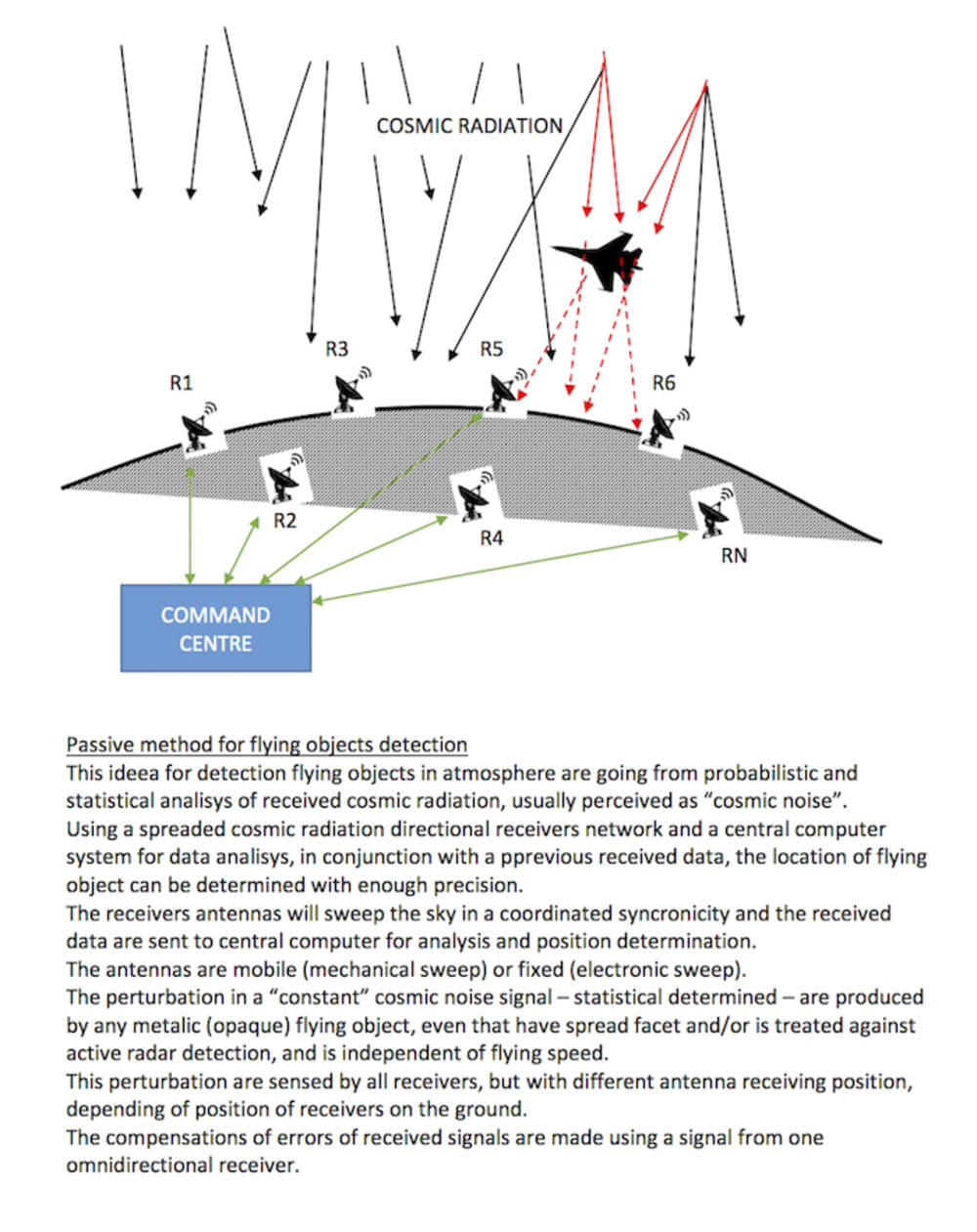Passive method for flying objects detection
This idea for detection flying objects in atmosphere are going from probabilistic and statistical analysis of received cosmic radiation, usually perceived as “cosmic noise.”
Using a spreaded cosmic radiation directional receiver network and a central computer system for data analysis, in conjunction with previously received data, the location of a flying object can be determined with enough precision.
The receiver's antennas will sweep the sky in a coordinated syncronicity and the received data are sent to central computer for analysis and position determination.
The antennas are mobile (mechanical sweep) or fixed (electronic sweep).
The perturbation in a “constant” cosmic noise signal – statistical determined – are produced by any metalic (opaque) flying object, even that have spread facet and/or is treated against active radar detection, and is independent of flying speed.
This perturbation are sensed by all receivers, but with different antenna receiving position, depending of position of receivers on the ground.
The compensations of errors of received signals are made using a signal from one omnidirectional receiver.
Like this entry?
-
About the Entrant
- Name:Florin Bujoaica
- Type of entry:individual
- Patent status:none

